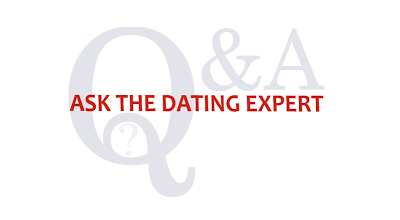Dating / Relationship Question and Answer
25 July 2001
How To Never Be At A Loss For Words
Do you ever get “tongue-tied” when you’re talking to someone –
especially someone you’re interested in? Next to public
speaking, this is the most common fear people have. But, fear
be gone! We’re going to solve this problem once and for
all!
To Be a Better Speaker – Listen!
An amazing thing happens when you learn to listen – you become a
better conversationalist! It’s a fact of communications –
you’ve got to learn to listen!
Listening is an active task – it doesn’t mean simply saying “uh
huh” ever few seconds or nodding your head. You’ve got to
actually pay attention to the person speaking. Why? Because
you’re going to use their conversation to keep things
going.
Also, if you’re at all interested in this person, you show it
with your body language and your ability to listen to them. If
you’re not listening, this person will detect it right
away.
Starting Conversations
How do you start a conversation with someone that you’re
interested in meeting? This is one of the most common
questions I get. People don’t really just want to break the
ice without having some way to continue, as this is awkward.
There has to be some “pay off” to making the first move.
So, how do you do this without coming off like a stalker? First,
forget using a “line”. Something like, “Did it hurt when you
fell out of heaven?” is just going to make you look foolish
and seem like you don’t have anything else to say. Your
prospective dialog partner is probably going to feel awkward as
well. This isn’t a good way to begin!
Instead, find something you have in common. If you’re at a
wedding, try asking the other person if they are a friend of
the bride or groom. At a coffee house, ask this person if
they’ve tried the caramel latte here. At the gym ask them if
they’ve found a particular exercise useful.
In general, you should avoid complimenting someone. Why? Because,
when you compliment someone you don’t know, all you can focus
on is how he or she looks. “You have beautiful eyes” is a nice
thing to say, but the person has no control over this. They
we’re born this way. Many people feel uncomfortable when
attention is drawn to their appearance. Thus, avoid compliments when
you first meet someone new.
For example, at the beach, you might ask this person, “With a tan
like that, you must be a surfer,” (this isn’t complimentary –
it’s observational), “ever ride the waves in Hawaii?”
“Open-Ended” Questions
To keep a conversation going, you need to learn to ask open-ended
questions. These are questions that have more than a “yes or
no” answer to them. For example, “Hey, nice place huh?” is a
closed-ended question, begging the response, “sure, what
ever.” On other hand asking, “Great place – what do you like most
about coming here?” is open-ended. If gives the person the
chance to express their opinions.
The other key to open-ended questions is to keep things somewhat
focused. Don’t expect the person you’re talking to “jump
through hoops.” If you meet someone in church and ask, “So,
why to YOU believe there is a God?” you’re asking too much of
the person. Try to stay more focused and keep it simple. A
better question might be, “Why do you come to this
church?”
What to Do With Lulls in a
Conversation
Some pauses are natural in conversation. When they go too long,
they become uncomfortable. This is where the art of listening
really comes in handy. If you’ve been listening to what the
other person has said, you have something to begin the next
round of communication.
Instead of spending nervous seconds thinking about what you want
to say to someone. Relax, and listen to them. Use THEIR
conversation to keep things going. You can ask someone about
something they’ve said, and this is by far easier than trying
to come up with something on your own.
By using open-ended questions based on what they say, you can
keep a conversation going almost forever. However, remember,
this is a conversation not an interrogation! Thus, you don’t
want to “pick apart” everything someone says. Just keep it
light and easy. “Yeah – I know what you mean” can go a long way.
Don’t Interrupt!
Nothing is more annoying to a speaker than being interrupted. If
you don’t want to have the conversation in the first place,
don’t start! All conversations have a natural “cadence” or
rhythm. This is similar to the waves at the ocean. All surfers
know that waves come in “sets”. These sets are combinations of
large and small waves, and repeat. So too, do conversations.
You want to time your interjections during the valleys of the
conversation sets.
At the end of a set is a longer pause where the natural rhythm of
the conversation slows down. This is the point to watch for.
You can use this to ask another open-ended question, or to
“close” the conversation (such as asking for a home
number).
Don’t Dominate The
Conversation
Everyone knows people who take one deep breath and just continue
a string of sentences that lasts an hour. They have no natural
cadence to their conversation. So, here’s a checklist to keep
in mind when YOU are the speaker:
1) Get a clear thought of what you want to say. 2) Take a moment
and think through the best (usually the shortest!) way to say
it. 3) Say what you want. 4) Pay attention! If you’re the only one
having said more than a single sentence for the past 2
minutes, if your listener is getting glassy eyed or is no
longer paying attention – give it a rest! 5) Get your listener
involved by asking them what THEY think about the subject. 6) Now,
shut up and practice your listening skills!
Communication with a
Purpose
When you meet someone new you should have a goal. If you’re
trying to get the person’s phone number then keep that goal in
mind. If you’re trying to make a new friend, you’ve got to
find something in common. If you’re just trying to pass the
time, you’re approach to communication will be different.
When you meet someone new, try to keep your conversations short.
A comfortable timeframe is about 2 to 5 minutes. This may seem
like too little time to make a connection, but you’d be
surprised what you can do in this time. For example, this
article is over 1100 words long, and probably took you about this
time to read it. Now, look what we’ve done in that short
period of time!



